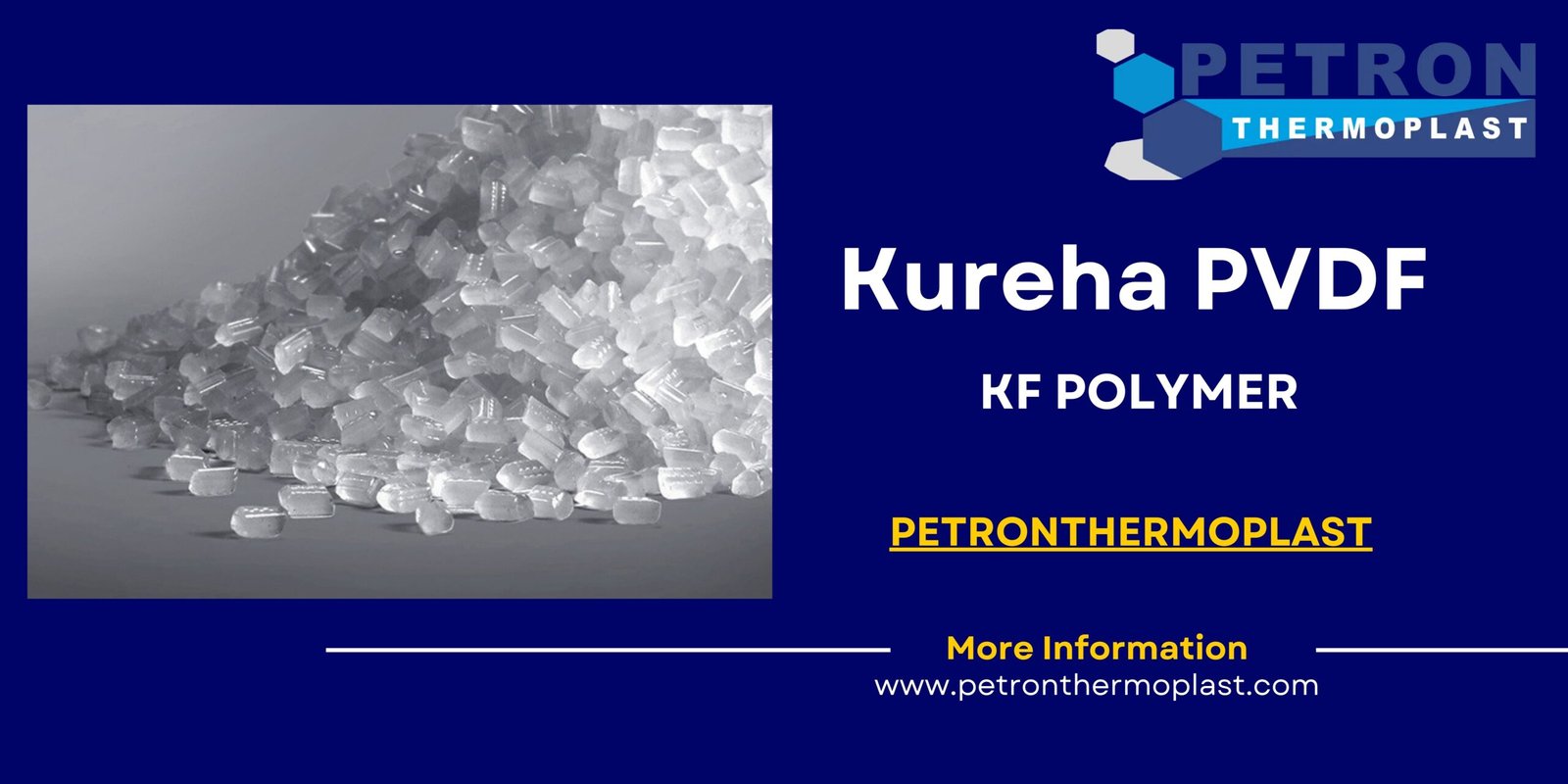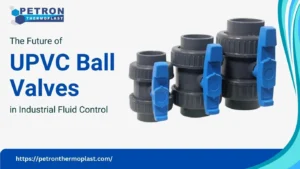Kureha PVDF, or Polyvinylidene Fluoride, is a high-performance thermoplastic fluoropolymer produced by Kureha Corporation. Known for its exceptional chemical resistance, thermal stability, and mechanical properties, Kureha PVDF is utilized in a variety of demanding applications across multiple industries.
What is Kureha PVDF?
Kureha PVDF, also known as KF Polymer, is a high-performance thermoplastic fluoropolymer developed by Kureha Corporation. This material is renowned for its exceptional chemical resistance, thermal stability, and mechanical strength, making it suitable for demanding industrial applications. It maintains its properties across a broad temperature range, from -40°C to 150°C, and offers excellent resistance to UV radiation and flame retardancy, which makes it ideal for both indoor and outdoor uses.
KF Polymer is widely utilized in various industries, including chemical processing, electronics, water treatment, and construction. Its low permeability to gases and liquids, coupled with good dielectric properties, makes it especially valuable in applications that require robust performance and long-term durability. Although more expensive than many other plastics, the versatility and reliability of Kureha PVDF make it a preferred choice for critical applications where performance cannot be compromised.
History
Kureha Corporation, a leading Japanese chemical manufacturer, developed Kureha PVDF (also known as KF Polymer) to meet the demand for high-performance fluoropolymers. Introduced in the mid-20th century, Kureha PVDF quickly gained recognition for its exceptional chemical resistance and thermal stability. Over the decades, it has evolved through continuous research and development, enhancing its properties and expanding its applications. Today, KF Polymer or Kureha PVDF is widely used in various industries, including chemical processing, electronics, and construction. Its success story reflects Kureha’s commitment to innovation and quality in advanced material solutions.
| Use Case | Industrial Application |
| Chemical Resistance | Used in chemical processing industries for piping and fittings. |
| Thermal Stability | Manufacturing of lithium-ion batteries for electrical vehicles. |
| Weather Resistance | Construction materials for architectural membranes. |
| Electrical Insulation | Cable insulation in aerospace and automotive industries. |
| Water Filtration | Membranes for wastewater treatment and desalination processes. |
| Biocompatibility | Medical devices and implants. |
Properties of Kureha PVDF
- Chemical Resistance: Kureha PVDF exhibits outstanding resistance to a wide range of chemicals, including acids, bases, and organic solvents, making it ideal for harsh chemical environments.
- Thermal Stability: Kureha PVDF can operate effectively over a broad temperature range, typically from -40°C to 150°C, without significant degradation.
- Mechanical Strength: Kureha PVDF offers high tensile strength and impact resistance, ensuring durability and reliability in various applications.
- Low Permeability: This material has low permeability to gases and liquids, providing excellent barrier properties.
- Electrical Properties: PVDF has good dielectric properties, making it suitable for electrical and electronic applications.
- UV Resistance: It is highly resistant to UV radiation, which helps maintain its properties and appearance in outdoor applications.
- Flame Retardancy: Naturally flame retardant, Kureha PVDF does not require additional flame-retardant additives.
Advantages of Kureha PVDF
- Durability: The combination of chemical resistance, mechanical strength, and thermal stability ensures long-term performance even in harsh conditions.
- Versatility: Suitable for a wide range of applications, from chemical processing to electronics, thanks to its comprehensive property profile.
- Low Maintenance: Kureha PVDF resistance to fouling and degradation minimizes maintenance requirements and associated costs.
- Ease of Processing: It can be processed using standard thermoplastic techniques, including injection molding, extrusion, and welding.
- Aesthetic Flexibility: Available in various colors and finishes, allowing for aesthetic customization in design applications.

Disadvantages of Kureha PVDF
- Cost: PVDF is generally more expensive than many other plastics, which can be a limiting factor for some projects.
- Processing Challenges: Requires precise processing conditions, which can necessitate specialized equipment and expertise.
- Limited High-Temperature Applications: While it has good thermal stability, PVDF is not suitable for very high-temperature applications beyond its specified range.
| Specification | Description |
| Chemical Resistance | Highly resistant to acids, alkalis, and organic solvents |
| Density | Typically around 1.78 g/cm³, providing lightweight yet strong material |
| Mechanical Strength | High tensile strength and impact resistance, suitable for demanding applications |
| Electrical Properties | Excellent dielectric properties, used for insulation in electrical components |
| Weather Resistance | UV resistant and weatherproof, suitable for outdoor applications |
| Flame Retardancy | Self-extinguishing properties, making it suitable for fire-safe applications |
Industry Use Cases
- Chemical Processing: Kureha PVDF is used in piping, tanks, and other components due to its excellent chemical resistance.
- Electronics: Utilized in wire insulation, connectors, and semiconductor components for its dielectric properties and thermal stability.
- Water Treatment: Ideal for membranes and filtration systems thanks to its low permeability and resistance to chemicals.
- Aerospace and Defense: Employed in various applications where high strength-to-weight ratios and resistance to harsh environments are crucial.
- Automotive: Used in fuel systems, seals, and gaskets due to its chemical resistance and durability.
- Building and Construction: Applied in roofing membranes, architectural coatings, and façade cladding for its UV resistance and aesthetic flexibility.
Kureha PVDF stands out as a high-performance material offering a unique blend of properties, including chemical resistance, mechanical strength, and thermal stability. These characteristics make it a preferred choice in various demanding applications across industries such as chemical processing, electronics, water treatment, aerospace, automotive, and construction. While it comes with a higher cost and specific processing requirements, the long-term benefits of Kureha PVDF often justify these considerations, ensuring reliable and efficient performance in critical applications. By understanding its properties and potential applications, engineers and CNC machined components manufacturers can leverage Kureha PVDF to create innovative and durable solutions tailored to meet diverse industrial needs.
To Read More: Kynar Pvdf, Pvdf ball valves
FAQs
What is KF Polymer?
KF polymer is a type of polyvinylidene fluoride (PVDF) produced by Kureha, known for its excellent chemical resistance, thermal stability, and electrical properties, making it suitable for a wide range of industrial applications.
What is PVDF?
Polyvinylidene Fluoride (PVDF) is a high-performance thermoplastic fluoropolymer known for its exceptional chemical resistance and thermal stability. It is widely used in applications requiring durability and reliability under harsh conditions. PVDF offers excellent mechanical strength, low permeability to gases and liquids, and good dielectric properties. Its versatility makes it suitable for various industries, including chemical processing, electronics, and construction.
What is PVDF Used For?
Pvdf is counted for temperatures up to 120 °C. Due to the resistance characteristics and upper temperature limit of PVDF, PVDF is used as pipes, sheets and linings in high temperature, hot acidic, radiation environments.
How does PVDF coating work?
PVDF coatings not only help reduce energy cooling costs and make interior spaces more comfortable, but they do so without compromising durability, performance, or beauty.




